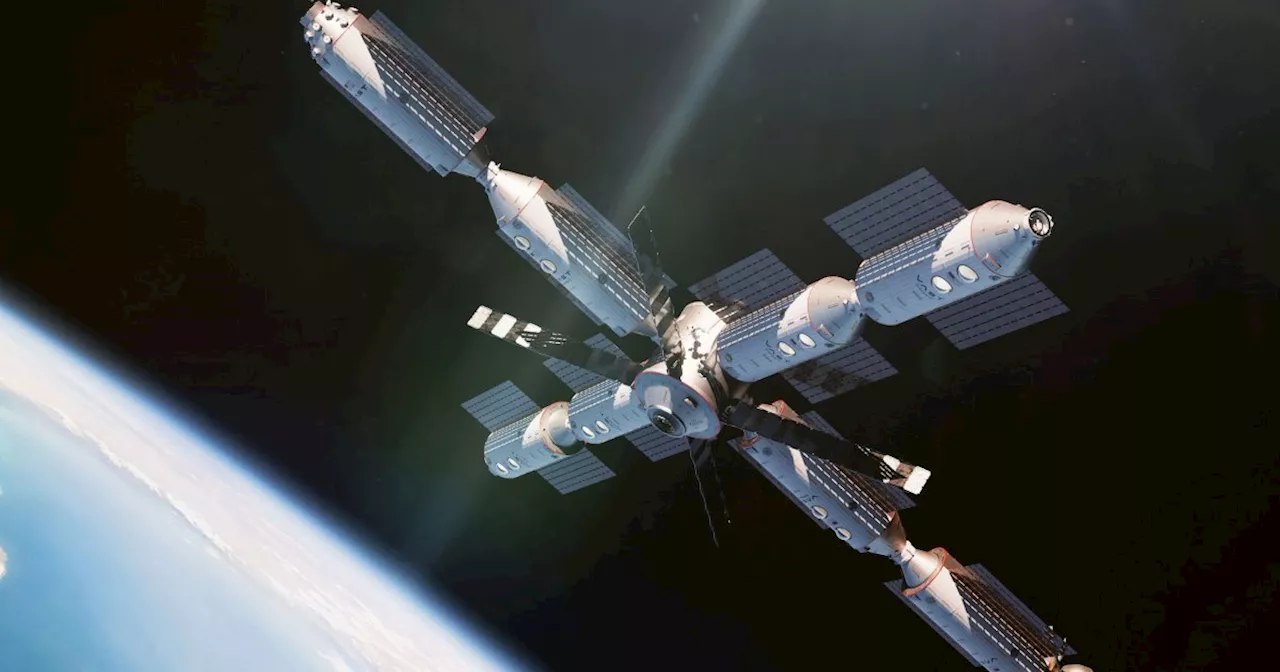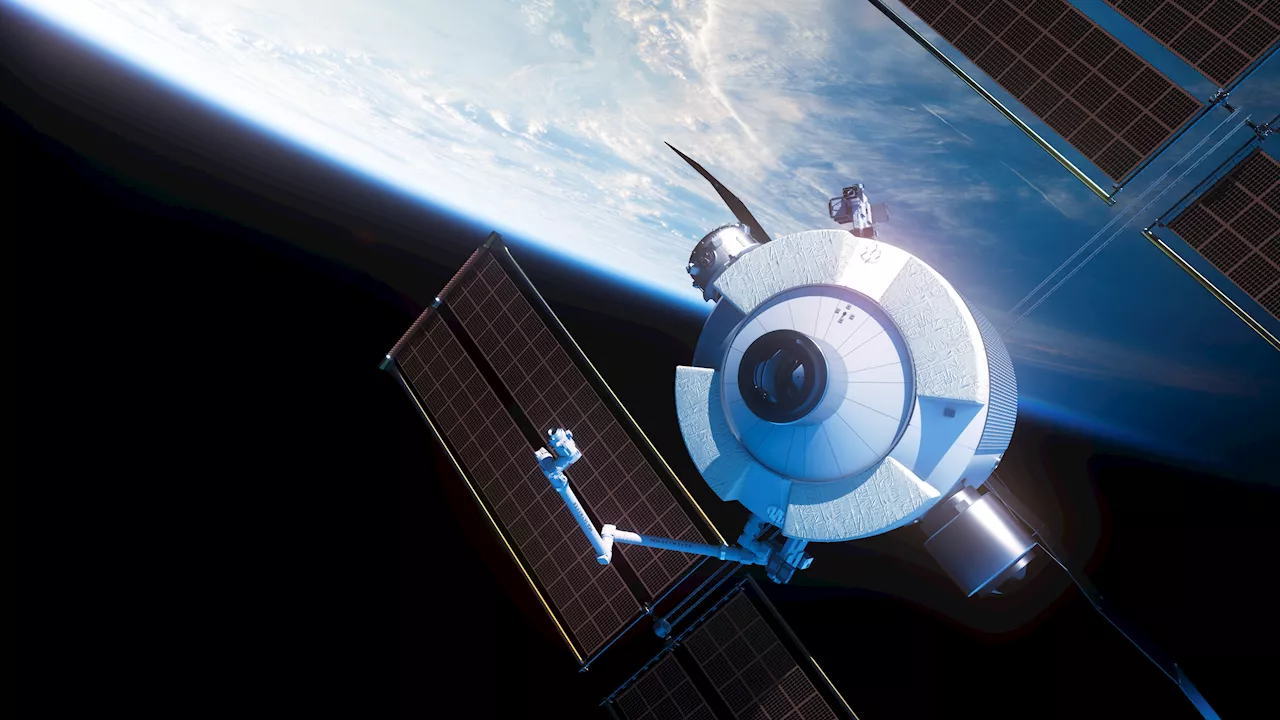The space sector is undergoing a rapid transformation, driven by advancements in cloud computing, artificial intelligence, and private investment. Thousands of smaller, more affordable satellites are being launched, leading to a boom in commercial space data and services.
Today’s space sector is at an inflection point, poised to capitalize on the tech sector’s gains from cloud computing and artificial intelligence. Just a decade ago, the space economy was dominated by large, school bus-sized satellites. These billion-dollar workhorses served military, intelligence, and civil agencies well for decades, with slow improvements made to their subsystems.
Then, much like the tech tsunami that rendered mainframe computers obsolete in the '80s and '90s, the space industry experienced its own revolution. Since then, the commercial space sector has exploded, with thousands of satellites launched every year—most no larger than a small desk, many the size of a shoebox. As next-generation space capabilities are increasingly procured from off-the-shelf technology solutions, with private capital driving most of the development, it’s hard to believe that the government was once initially resistant to such sweeping change. The Space Force, in particular the Space Development Agency (SDA), is fully embracing this digital revolution, and several new offices are contracting directly with commercial space data companies. This is a remarkable shift, encouraging the creation of new commercial companies and generating jobs and tax revenue in place of dependence on government funding. It allows for critical space technology to advance at the same pace as Silicon Valley innovations, bolstering the U.S. as the world’s leading space economy in the same way it has dominated in consumer technologies. Yet, a major challenge remains in reinventing the government’s planning and acquisition processes to keep up with the speed and flexibility of the commercial space sector. Holding the private sector to the centralized, statist methods of the past will not work, and change is necessary for the U.S. to remain competitiv
Space Technology Commercial Space Artificial Intelligence Cloud Computing Government Procurement
United States Latest News, United States Headlines
Similar News:You can also read news stories similar to this one that we have collected from other news sources.
 Axiom Space Adjusts Plans for Commercial Space StationAxiom Space has modified its assembly sequence for its planned commercial space station, Axiom Station, to accelerate its operation as a free-flying space station and reduce reliance on the International Space Station during assembly. The new plan involves launching the Payload, Power, and Thermal Module first, allowing it to detach as early as 2028 and become a free-flying destination. Axiom Space will continue assembly in free-flight, adding additional modules like Habitat 1 and the Research and Manufacturing Facility.
Axiom Space Adjusts Plans for Commercial Space StationAxiom Space has modified its assembly sequence for its planned commercial space station, Axiom Station, to accelerate its operation as a free-flying space station and reduce reliance on the International Space Station during assembly. The new plan involves launching the Payload, Power, and Thermal Module first, allowing it to detach as early as 2028 and become a free-flying destination. Axiom Space will continue assembly in free-flight, adding additional modules like Habitat 1 and the Research and Manufacturing Facility.
Read more »
Dallas Firm Plans Luxury Housing, Commercial Space Near The Rock at La CanteraPhoenix Property Co. will develop approximately 342 luxury apartments, a parking garage, and 10,000 square feet of commercial space next to The Rock at La Cantera in San Antonio.
Read more »
Luxury Apartments and Commercial Space Planned for La CanteraPhoenix Property Co. is set to develop a mixed-use project next to the Rock at La Cantera, featuring luxury apartments, a parking garage, and commercial space.
Read more »
 Vast Unveils Final Design for Haven-1, the World’s First Commercial Space StationVast Space is planning to deploy Haven-1, a single-module space station, in 2024, aiming to become the first commercial station in orbit. A successful deployment, including crewed missions, could secure Vast Space's bid for NASA's Commercial Low-Earth Orbit Destination (CLD) Phase II program. This would pave the way for the Haven-2 facility, a more complex, multi-module station planned for deployment in 2028.
Vast Unveils Final Design for Haven-1, the World’s First Commercial Space StationVast Space is planning to deploy Haven-1, a single-module space station, in 2024, aiming to become the first commercial station in orbit. A successful deployment, including crewed missions, could secure Vast Space's bid for NASA's Commercial Low-Earth Orbit Destination (CLD) Phase II program. This would pave the way for the Haven-2 facility, a more complex, multi-module station planned for deployment in 2028.
Read more »
 NASA Sees Progress on Starlab Commercial Space Station DevelopmentA NASA-funded commercial space station, Starlab, recently completed four key developmental milestones, marking substantial progress in the station’s design
NASA Sees Progress on Starlab Commercial Space Station DevelopmentA NASA-funded commercial space station, Starlab, recently completed four key developmental milestones, marking substantial progress in the station’s design
Read more »
 US Space Force's X-37B Space Plane Marks One Year in OrbitThe US Space Force's X-37B Orbital Test Vehicle has reached its one-year mark in space, performing groundbreaking aerobraking maneuvers to conserve fuel and change orbits.
US Space Force's X-37B Space Plane Marks One Year in OrbitThe US Space Force's X-37B Orbital Test Vehicle has reached its one-year mark in space, performing groundbreaking aerobraking maneuvers to conserve fuel and change orbits.
Read more »
